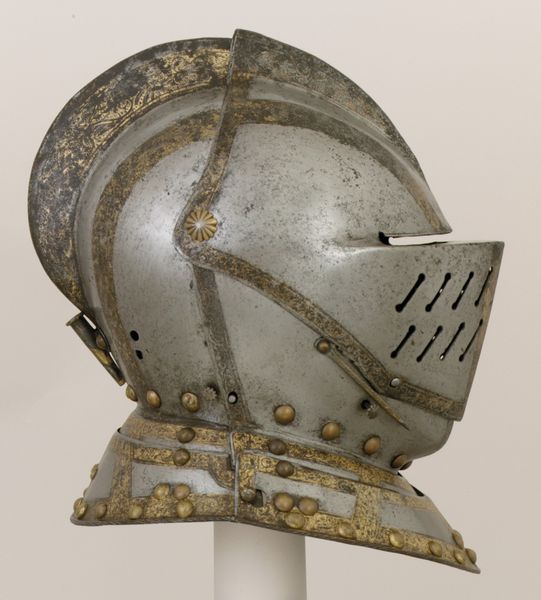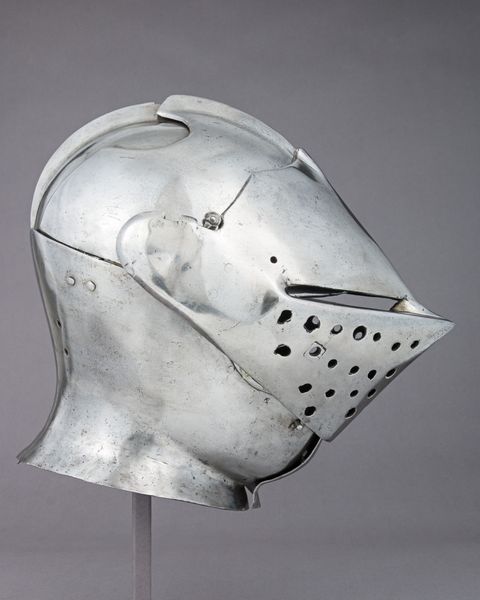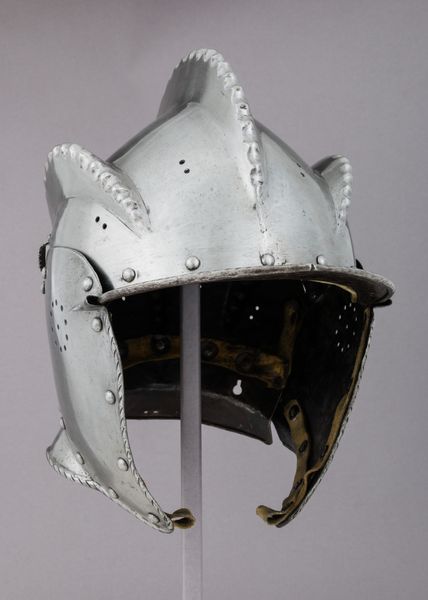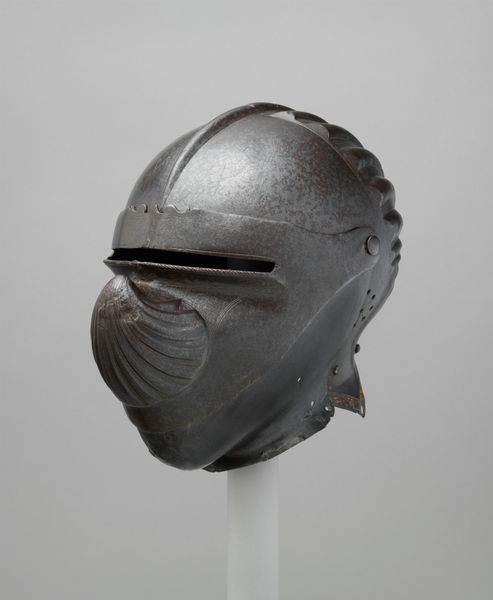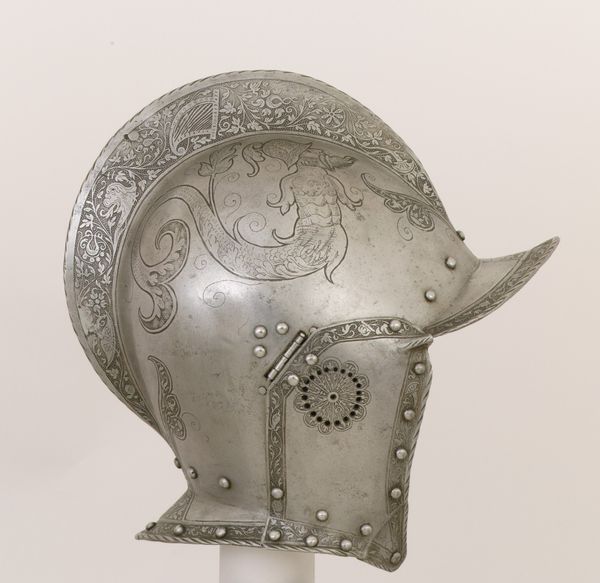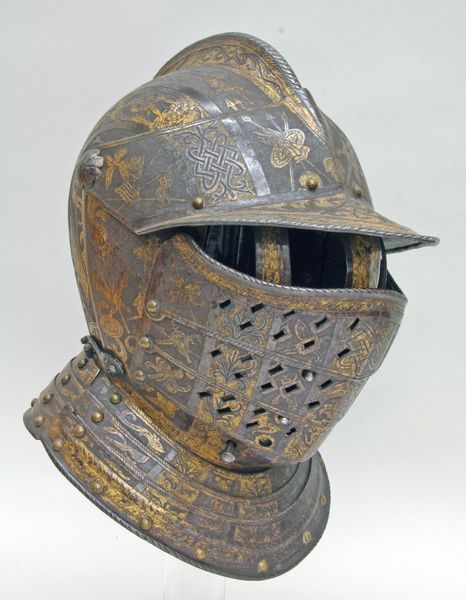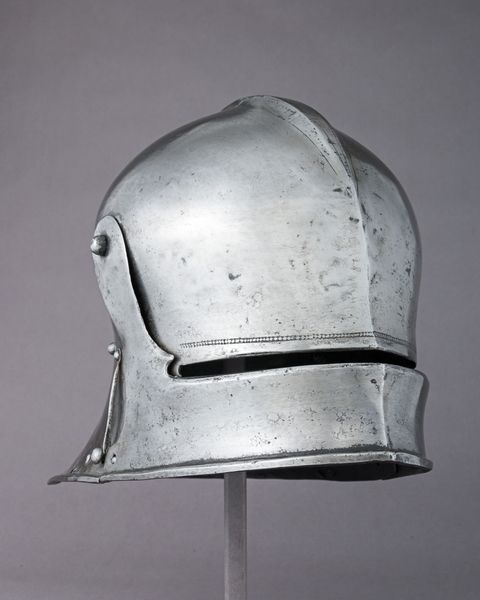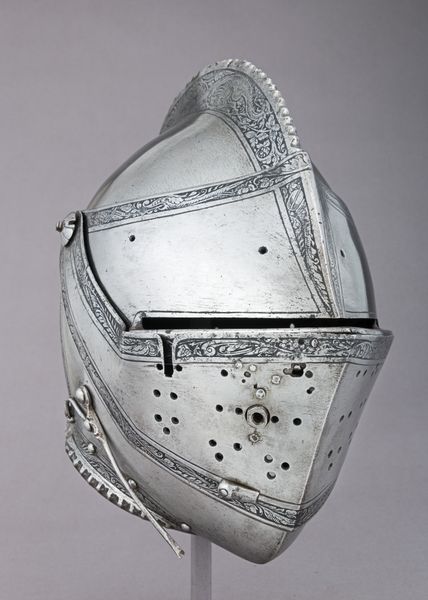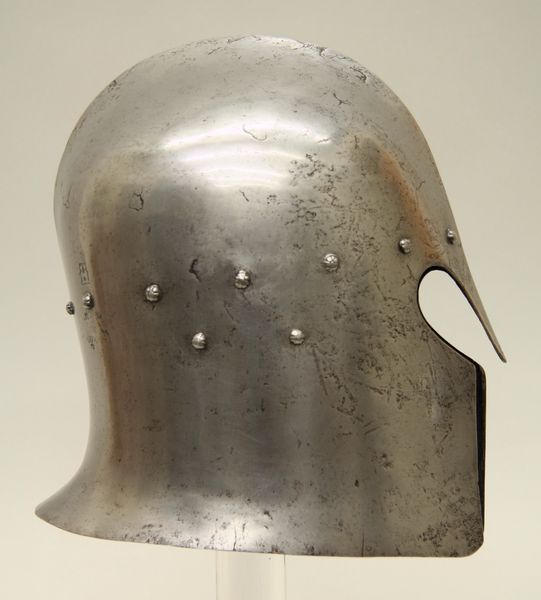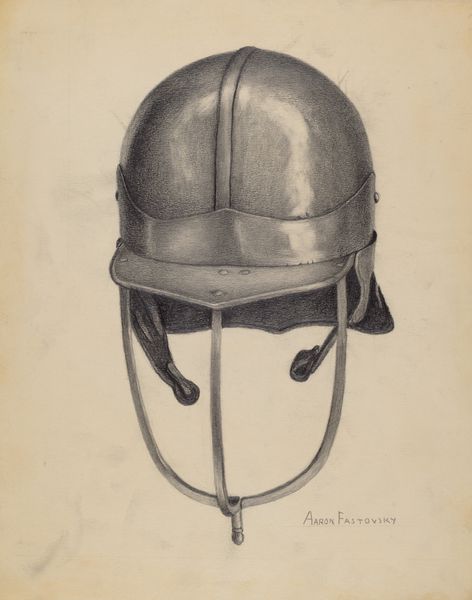
metal, sculpture
#
medieval
#
metal
#
11_renaissance
#
sculpture
#
history-painting
#
decorative-art
Dimensions: Wt. 8 lb. 8 oz. (3849 g)
Copyright: Public Domain
Curator: Today we are looking at an armet crafted between 1500 and 1550, probably by Kolman Helmschmid. It resides here at The Metropolitan Museum of Art. Editor: Initially, I’m struck by how imposing this piece is despite its relatively small size. The reflective surface almost seems to absorb light. Curator: Yes, the use of metal is critical. It creates an impression of solidity but also serves as a canvas for ornamentation. Note the etching; it's beautifully detailed. Editor: Right, it feels like more than mere protection; it makes claims about the wearer's status and power. This wasn’t simply functional—it was performative. I am curious how a piece such as this participates within gendered concepts of medieval Europe? Curator: Absolutely, but first let’s appreciate the craft. Examine how the various pieces articulate, how it all comes together so seamlessly as a constructed form that protects but moves fluidly. Semiotically speaking, one might decode what kind of image of leadership and self-composure is encoded in the medium of the work and overall craftsmanship. Editor: Fair enough, the technical artistry can't be ignored. But it existed to signal particular positions in medieval hierarchies. The iconography surely speaks to this. Who was privileged enough to wear this? And what power dynamics does an object like this reproduce and normalize? Curator: Indeed, by looking at surface details and techniques in construction we discover not only its function but also meaning inscribed upon this kind of military effigy during the Renaissance era. Editor: But the piece doesn't exist outside its historical framework. So how do we challenge its associations with conflict and class and gender imbalances? Do we even want to separate them when considering it today? Curator: I understand, and your points on socio-political status of the original wearer is well noted. Though now we consider the object on its own merits as a well crafted piece of fine decorative art within art history's historic trajectory. Editor: Still, let's acknowledge that objects like this have historically excluded many while glorifying a powerful few. Acknowledging this paradox, perhaps we might move towards a more critical engagement that explores these intricacies.
Comments
No comments
Be the first to comment and join the conversation on the ultimate creative platform.

